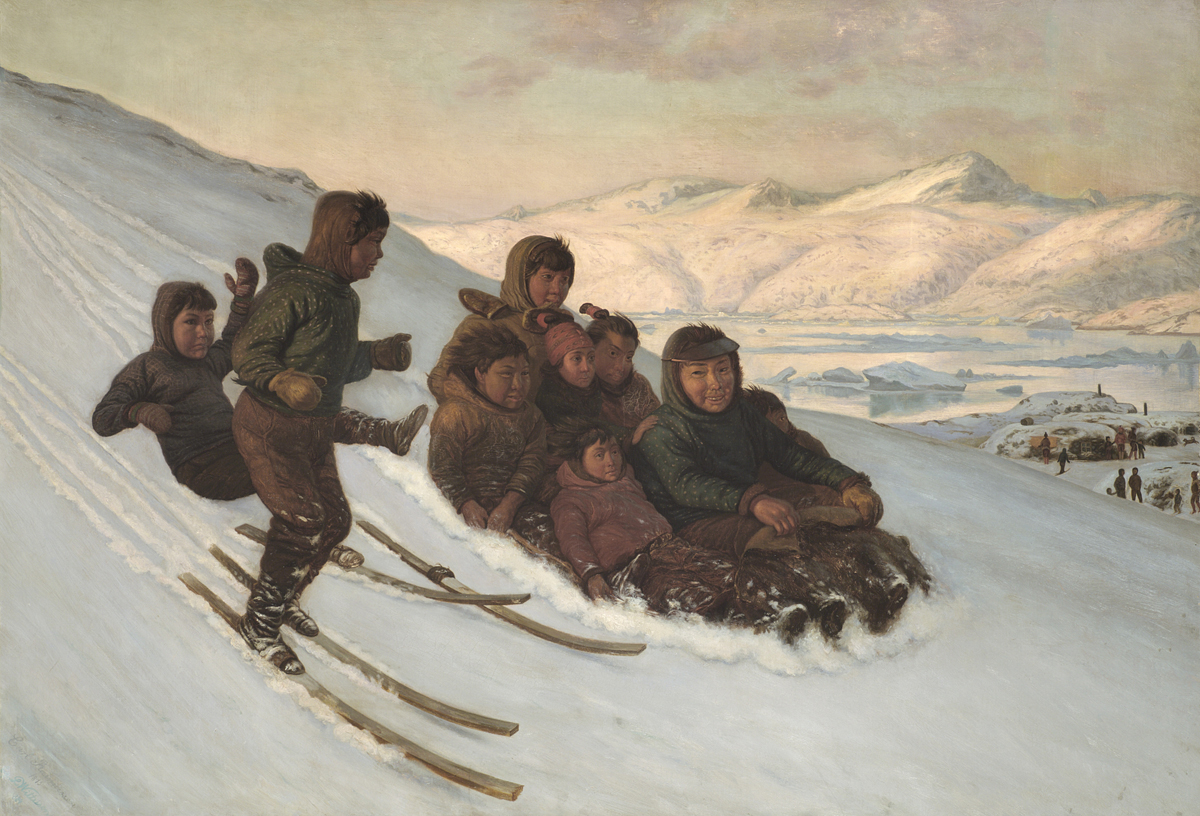CARL JENS ERIK C. RASMUSSEN
Danish 1841-1893
AVAILABLE WORKS
SELECT SOLD
Carl Rasmussen was born in Aeröskjӧbing on the island of Aeo, Denmark in 1841, the eldest son of 11 children of a master tailor. At the age of fifteen he moved to Copenhagen to study for a career in hosiery, which he completed in 1861. He was attracted to the artwork in Copenhagen and took drawing lessons with architects Hans Holm and C.V. Nielsen, and later with animal painter Didrik Frisch. He took passage as a cabin boy on the merchant ship of a relative and travelled to Scotland, painting on the journey. This led to enrolling in courses at the Copenhagen Technical College, and in 1866 studied under landscape painter C.F. Aagaard. He studied at the Danish Royal Academy in Copenhagen under Danish artists Hans J. Holm, J. D. Frisch and A.C. Nielsen, and was influenced by C.F. Aagaard, as well as Carl Bloch. He exhibited regularly including at the Charlottenborg Spring Exhibition first in 1863 and then frequently until his death, including in Paris and London.
In 1870 Rasmussen visited Greenland and stayed for almost a year mainly around Nuuk, completing sketches which were later turned into oil paintings. One of these was purchased for the Royal Danish Collection. He obtained a scholarship to the Danish Royal Academy which enabled him to travel in 1872-3 to the Netherlands, Belgium, Italy as well as to galleries in Paris, Dresden and Berlin. Later he travelled to England, France, and Palestine.
In 1880 Rasmussen married his cousin Anna Egidia Rasmussen and the couple had eight children. He moved his family back to his birth island of Aero to the town of Marstal, where he established a studio and painted the local landscape and people. He travelled again to Greenland in 1893 and on the return journey with the brig Peru, disappeared while painting on the aft deck. Cape Rasmussen, a site in Antarctica is named after him.
Known as the “Greenland Painter”, Rasmussen is famous for his marine subjects and paintings depicting the history of Greenland and the arctic way of life. He worked in a naturalist style painting figures among cold northern seascapes and terrain, and depicting villagers in genre or portrait settings. His work has been inspirational to artists depicting Greenland and the arctic landscape.


